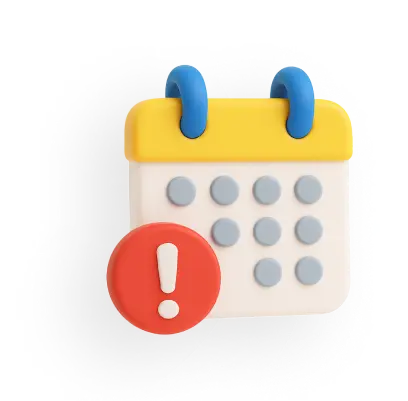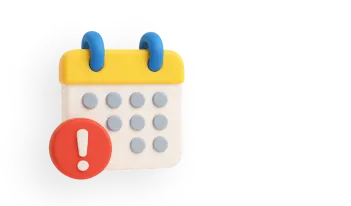Credit Card: What is It and How Does It Work?
Credit cards are the go-to payment method for both online and offline purchases. Whether you're a business owner or a salaried professional, a credit card offers exciting rewards from application to purchase. Plus, it provides a flexible repayment window, making it a preferred choice across all age groups.
Here’s a detailed breakdown of how credit cards work and why they are a smart financial tool.
What is a credit card?
A credit card is a plastic payment tool issued by a financial institution, allowing users to borrow funds for purchases. The borrowed amount, along with interest and applicable fees, must be repaid to the issuer.
Many credit cards also offer a line of credit, enabling cash advances, though the borrowing limit depends on the cardholder’s income level. With their convenience and flexibility, credit cards remain one of the most popular payment methods today.
How to apply for a credit card?
Step 1: Visit the credit cards page on the website of the bank you are considering getting a credit card from.
Step 2: Read through the benefits and features of the cards listed to choose the right credit card you wish to apply for from the available list.
Step 3: Go through the eligibility criteria associated with the card and verify if you satisfy them all.
Step 4: If you think you satisfy the criteria, go ahead and click on the ‘Apply Now’ button next to the card’s description on the bank’s website.
Step 5: In the application form, fill up all the necessary details.
Step 6: Attach a copy of all the necessary supporting documents while applying.
Step 7: The bank will process the application and get in touch with you on the status.
How does a credit card work?
A credit card is a revolving line of credit issued by a bank or financial institution, allowing users to make purchases without immediate cash payment. The outstanding balance accrues based on the billing cycle and must be repaid monthly.
Key Features:
✅ Credit Limit – Set based on credit history and income.
✅ Credit Score Boost – Paying the full statement balance on time improves creditworthiness.
✅ Rewards & Benefits – Every transaction earns cashback, points, or discounts.
✅ Interest & Late Fees – Unpaid balances attract high interest rates and late payment fees, impacting the credit score.
Using a credit card responsibly helps build a strong credit profile and increases eligibility for bigger loans.
How to read a credit card statement?
Account details: This section consists of your name, email ID, registered residential address, partially masked credit card number, and GST number. This section also comprises the following:
- The statement date
- EMI due date
- The minimum amount you need to pay
- The total amount due
- Your maximum credit limit
- The available credit limit
- Cash limit
Account summary: Under this section, you will find the following:
- Transaction and merchant details
- Rewards points
Features and benefits of credit cards
Here is a list of the features and benefits of using credit cards:
- Easier, compact payment method as compared to carrying cash.
- Make instant payments for your purchases with a credit card.
- Payment through credit cards is globally accepted.
- Credit cards come with a balance transfer facility where you can transfer the outstanding balance of one card to another with a lower interest rate.
- Enjoy an interest-free period where you can pay the balance without interest charges.
- Make partial payments to skip paying the entire outstanding balance at once.
- Utilise the EMI option where you can make equal monthly instalments for your purchase.
- Earn reward points, cashback, flyer miles, welcome and other privileges upon every rupee spent with the credit card.
- Access to exclusive privileges to premiere events such as complimentary tickets.
- Few cards provide travel insurance when you travel abroad.
- Responsible repayment behaviour can build your credit history and, in turn, your credit score.
What is a credit card limit?
The credit card limit, or credit limit, refers to the maximum spending capacity assigned to a card by a bank or financial institution. This limit is determined primarily by the cardholder’s monthly income and credit history, though banks may have additional criteria for assessment.
Cardholders can request a credit limit increase or decrease if their income or financial liabilities change. A higher limit can enhance purchasing power, while a lower limit can help in better financial management.
How to pay a credit card bill?
There are several methods to pay a credit card bill, such as:
Internet banking – NEFT/RTGS: If you’ve registered for internet banking, you can easily pay your credit card bill—whether or not you have a savings account with the same bank. Simply log in to your net banking portal and transfer funds to your credit card account like any other funds transfer.
Depending on the amount and processing speed, you can choose:
This method offers a secure and efficient way to manage your credit card payments.
BillDesk: BillDesk is a secure online payment platform that lets you pay your credit card bill even without a net banking account. Supported by many banks, it offers a hassle-free way to make payments using a debit card or net banking from partner banks.
This method ensures a convenient and secure transaction, making credit card bill payments quick and effortless.
Auto-debit facility: With net banking, you can enable the auto-debit facility to ensure timely credit card bill payments. Simply set up standing instructions to deduct either the minimum amount due or the total outstanding balance on a fixed date every month.
You can activate this feature online via net banking or by submitting a written request to your bank. This method eliminates the risk of missed payments, helping you avoid late fees and interest charges.
Mobile wallets:
Bank branch: Visit the nearest bank branch to deposit cash against your credit card bill. Fill out the deposit slip and submit it at the counter to process the payment.
Keep in mind:
- A processing fee of around ₹100 may apply per transaction.
- The payment takes one working day to reflect in your credit card account.
This method is useful for instant payments, but it's important to consider the additional charges.
ATM: To pay your credit card bill through an ATM, you must have a debit card from the same bank that issued the credit card. Visit the nearest ATM, insert your debit card, and select ‘Credit Card Bill Payment’ from the menu. Follow the on-screen instructions to complete the transaction.
Since the ATM directly transfers funds from your savings account to your credit card account, the payment is processed instantly.
Customer care: If you hold a savings or current account with the same bank that issued your credit card, you can use the customer care service to make payments. The IVRS (Interactive Voice Response System) will guide you through the process, and payments reflect instantly.
However, not all banks offer this feature, so it's important to check with your bank before using this payment method.
Cheque/DD: You can make a credit card payment by drawing a cheque or demand draft (DD) in favor of your credit card account and dropping it at a bank branch or designated dropbox. Ensure you write your name and contact number on the back of the cheque or DD.
Processing time varies:
- Same bank cheque/DD: Up to 3 business days.
- Other bank cheque/DD: Up to 5 business days.
- Outstation cheques: May take up to 21 business days.
Consider these timelines to avoid late fees and interest charges.
How to calculate interest on a credit card bill?
Suppose you purchased a dining table for ₹10,000 on October 1, 2019, using your credit card. If your billing cycle runs from September 15 to October 15, your statement date would be October 16, 2019, and the payment due date would be November 4, 2019.
If the outstanding balance remains unpaid after the due date, a monthly interest rate of 3.5% will be applied. The minimum payment required is 5% of the total bill plus any additional charges. The interest on the unpaid amount is calculated using the formula:
Interest = (Outstanding Amount × Monthly Interest Rate × 12 × Number of Days) ÷ 365.
Failure to pay the full balance on time will result in interest accumulation and may impact your credit score.
Scenario 1: Full payment made before the due date
Payment made: Rs.10,000
Payment date: 3 November 2019
Payment due date: 4 November 2019
Next statement date: 16 November 2019
Since the payment is made in full before the due date, 4 November 2019, no interest will be charged on the bill. Therefore, you can pay Rs.10,000 to clear the outstanding balance.
Scenario 2: Partial payment made before the due date
Payment made: Rs.5,000
Payment date: 3 November 2019
Payment due date: 4 November 2019
Next statement date: 16 November 2019
Since you choose to make a partial payment within the due date, you must pay a minimum of 5% of the outstanding balance (Rs.10,000). In this case, the minimum payment amount required is Rs.500. However, if you decide to pay Rs.5,000, the interest payable over the period is calculated below. The interest levied from the date of purchase to the date of payment = (34 x 10,000 x 3.5% x 12)/365 = 391.2
Interest is calculated based on the number of days between the date of payment and the next payment due date. If the payment is made in two instalments within the payment due date, the last payment date is considered for calculations. In this case, the interest payable is = (13 x 5,000 x 3.5% x 12)/365 = 74.79 Total interest to be paid = 391.2 + 74.79 = Rs.466
How to get a credit card statement?
Frequently Asked Questions



